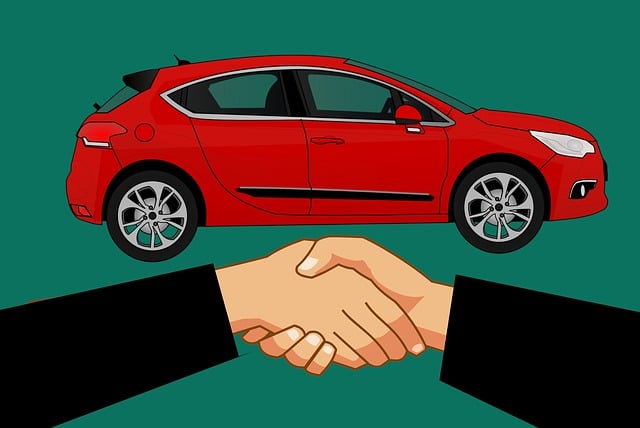Buying a used car can save you thousands of dollars compared to buying new—but only if you do it right. From setting a budget to getting the keys, here are all the essential steps to confidently and safely buying a used vehicle in the United States.
1. Set Your Budget
Start by figuring out how much you can afford to spend. Consider not just the purchase price, but also:
-
Taxes and registration fees
-
Insurance costs (higher for certain models)
-
Maintenance and repair history
-
Fuel economy
-
Financing interest (if you’re not paying cash)
Tip: Don’t max out your budget. Leave a buffer for unexpected repairs.
2. Determine Your Needs
Think about how you’ll use the vehicle. Ask yourself:
-
Do I need good fuel economy for commuting?
-
How much passenger or cargo space do I need?
-
Will I be driving in snow or off-road?
-
Do I want a car, SUV, truck, or hybrid?
Knowing what matters most will narrow your search and keep you focused.
3. Start Your Search
Search multiple platforms to compare vehicles and prices:
-
Online marketplaces like Autotrader, CarGurus, and Facebook Marketplace
-
Local dealerships
-
Certified Pre-Owned (CPO) programs
-
Craigslist (use extra caution here)
Save listings and compare mileage, price, location, and seller type (dealer vs. private party).
4. Check Vehicle History Reports
Always get a vehicle history report using the VIN (Vehicle Identification Number) from services like:
These reports reveal critical details like:
-
Accident history
-
Service records
-
Ownership history
-
Title status (clean, salvage, rebuilt, etc.)
5. Contact the Seller and Ask Questions
Reach out to the seller and ask:
-
Why are you selling the car?
-
Are you the original owner?
-
Has the car ever been in an accident?
-
Do you have maintenance records?
-
Is there a loan or lien on the car?
Clear, honest answers are a good sign. Hesitation or vagueness? Red flag.
6. Inspect the Vehicle
Don’t skip this step. Even if the car looks great and has a clean history, you need a professional pre-purchase inspection.
Hire a Mobile Car Inspector (like iNeedaPPi)
A mobile inspector will:
-
Check for hidden damage
-
Test brakes, suspension, fluids, and electronics
-
Look for signs of previous repairs or flood damage
-
Provide a detailed inspection report
Cost: Typically $169–$250—a wise investment to avoid buying a lemon.
7. Take a Test Drive
Drive on local roads and the highway to test:
-
Acceleration, braking, and steering
-
Engine and transmission performance
-
Dashboard warning lights
-
Visibility, comfort, and noise levels
Pay attention to anything that feels off or inconsistent.
8. Negotiate the Price
Armed with the inspection report, market value (from Kelley Blue Book or Edmunds), and comparison listings, negotiate confidently.
-
Point out flaws or needed repairs
-
Be polite but firm
-
Don’t be afraid to walk away
Dealers may have more wiggle room on price than private sellers.
9. Review the Paperwork Carefully
For private party sales, ensure:
-
Title is clear (no liens)
-
Title is signed over correctly
-
Odometer reading is accurate and disclosed
-
Bill of sale is completed
For dealerships, read the buyer’s guide (required by law) and avoid:
-
Unnecessary add-ons
-
Hidden fees
10. Pay Securely
Avoid cash for large amounts. Use a:
-
Bank transfer
-
Certified check
-
Escrow service (especially for long-distance purchases)
Be wary of sellers who rush the process or insist on odd payment methods.
11. Transfer Title and Register the Vehicle
Go to your local Department of Motor Vehicles (DMV) with:
-
Title signed by both parties
-
Bill of sale
-
Valid ID and proof of insurance
-
Smog/emissions test results (in required states)
-
Odometer disclosure form (if applicable)
Pay registration fees and sales tax. Your DMV will issue new plates or transfer existing ones.
12. Get Insurance Coverage
Before driving your new (used) car home, make sure it’s insured. Contact your insurer with the:
-
VIN
-
Year, make, and model
-
Mileage
You can often add a new car to your existing policy online or by phone.
Final Thoughts
Buying a used car takes effort, but it’s well worth it when you end up with a reliable ride and peace of mind. Follow these steps, and don’t skip the inspection—it’s your best defense against costly surprises.
Need a mobile inspection you can trust? iNeedaPPi Car Inspectors is the #1 mobile inspection service in the US. Book an inspection today and buy with confidence.



